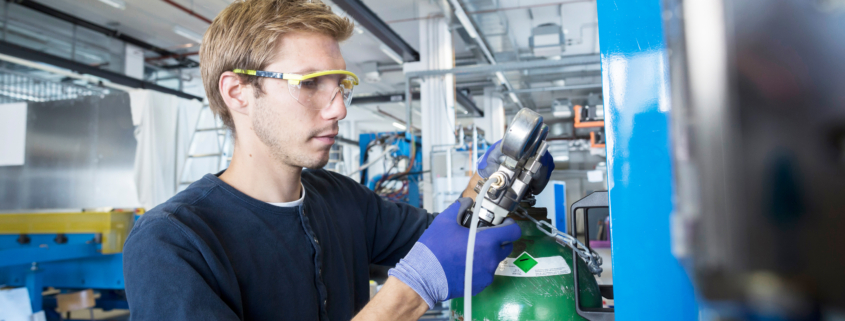What Are Degassing Systems?
- Corrosion of pipelines, boilers, and industrial equipment
- pH imbalances that lead to scaling and inefficiencies
- Compromised water quality for pharmaceutical, food, and power industries
How Do Degassing Systems Work?
1. Membrane Degassing Systems
Process:
- Water flows through a membrane contactor where a vacuum or a strip gas (such as nitrogen) removes the dissolved gases.
- The hydrophobic membrane allows gases to pass through while keeping the water separate.
- This method is highly efficient in removing CO₂ and O₂ from water.
Common Applications:
- Reverse Osmosis (RO) Pretreatment
- Boiler Feedwater Treatment
- Semiconductor and Electronics Manufacturing
2. Vacuum Degassing Systems
Process:
- Water enters a vacuum chamber where the pressure is lowered significantly.
- The change in pressure forces dissolved gases to come out of the water.
- Extracted gases are then removed through an exhaust system.
Common Applications:
- Power Plants (Steam and Turbine Systems)
- Pharmaceutical Water Purification
- Chemical Processing
3. Forced Draft Degassing Systems
Process:
- Water is sprayed or flowed over packing material inside a degassing tower.
- Fans blow air through the tower, stripping gases like CO₂, H₂S, and volatile organic compounds (VOCs) from the water.
- The treated water collects at the bottom of the tower, ready for further purification.
Common Applications:
- Large-Scale Industrial Water Treatment
- Groundwater Remediation
- Drinking Water Treatment
4. Chemical Degassing Systems
Process:
- Deoxygenation chemicals (such as sodium sulfite) react with dissolved oxygen, preventing corrosion in industrial systems.
- pH stabilizers help eliminate CO₂ to prevent acid formation in water treatment applications.
Common Applications:
- Boiler Feedwater Systems
- High-Purity Water in Pharmaceutical and Food Processing
- Oil & Gas Water Treatment
Why Are Degassing Systems Important?
- Corrosion Damage – By removing oxygen and CO₂, degassing systems protect pipelines, boilers, and industrial equipment from costly corrosion.
- pH Instability – CO₂ removal helps maintain a stable pH level in water treatment systems, preventing scaling and inefficiencies.
- Operational Inefficiencies – Industries relying on reverse osmosis, cooling systems, and power plants benefit from degassing as it enhances overall system performance and longevity.
Industries That Benefit from Degassing Systems
- Power Plants: Prevents corrosion in boilers and turbines, ensuring uninterrupted power generation.
- Pharmaceutical & Biotechnology: Guarantees ultra-pure water for medical formulations and laboratory applications.
- Food & Beverage Processing: Removes contaminants to ensure water quality for manufacturing drinks, dairy, and processed foods.
- Semiconductor & Electronics: Provides high-purity water for circuit board fabrication and semiconductor cooling.
- Reverse Osmosis Systems: Used as a pre-treatment step in RO plants to prevent CO₂ scaling and enhance membrane performance.
Future of Degassing Technology
With advancements in automation and remote monitoring, next-generation degassing systems will offer enhanced performance with real-time data tracking, helping industries maintain optimized water treatment operations.
Looking for Advanced Water Treatment Solutions?
Degasification plays a crucial role in improving water quality, preventing corrosion, and enhancing the efficiency of industrial processes. Whether through membrane contactors, vacuum degassing, or air stripping towers, these systems ensure that dissolved gases do not compromise the performance of reverse osmosis, boiler systems, and industrial water treatment processes.
As industries continue to seek sustainable and cost-effective water treatment solutions, degassing systems will remain a critical technology in achieving high-purity water.



